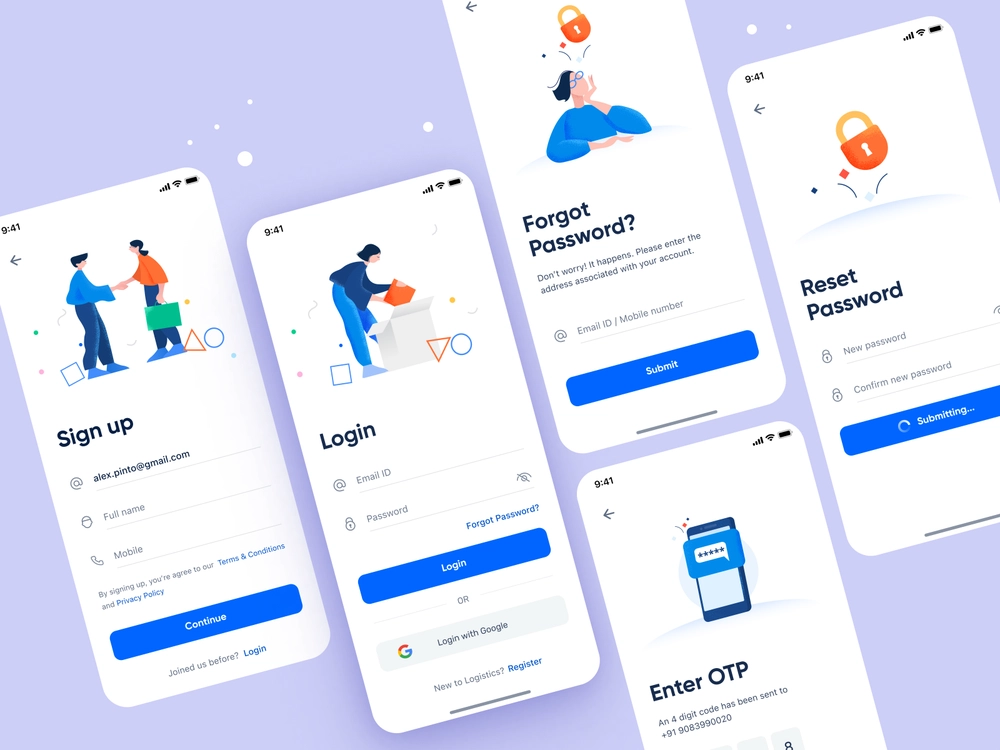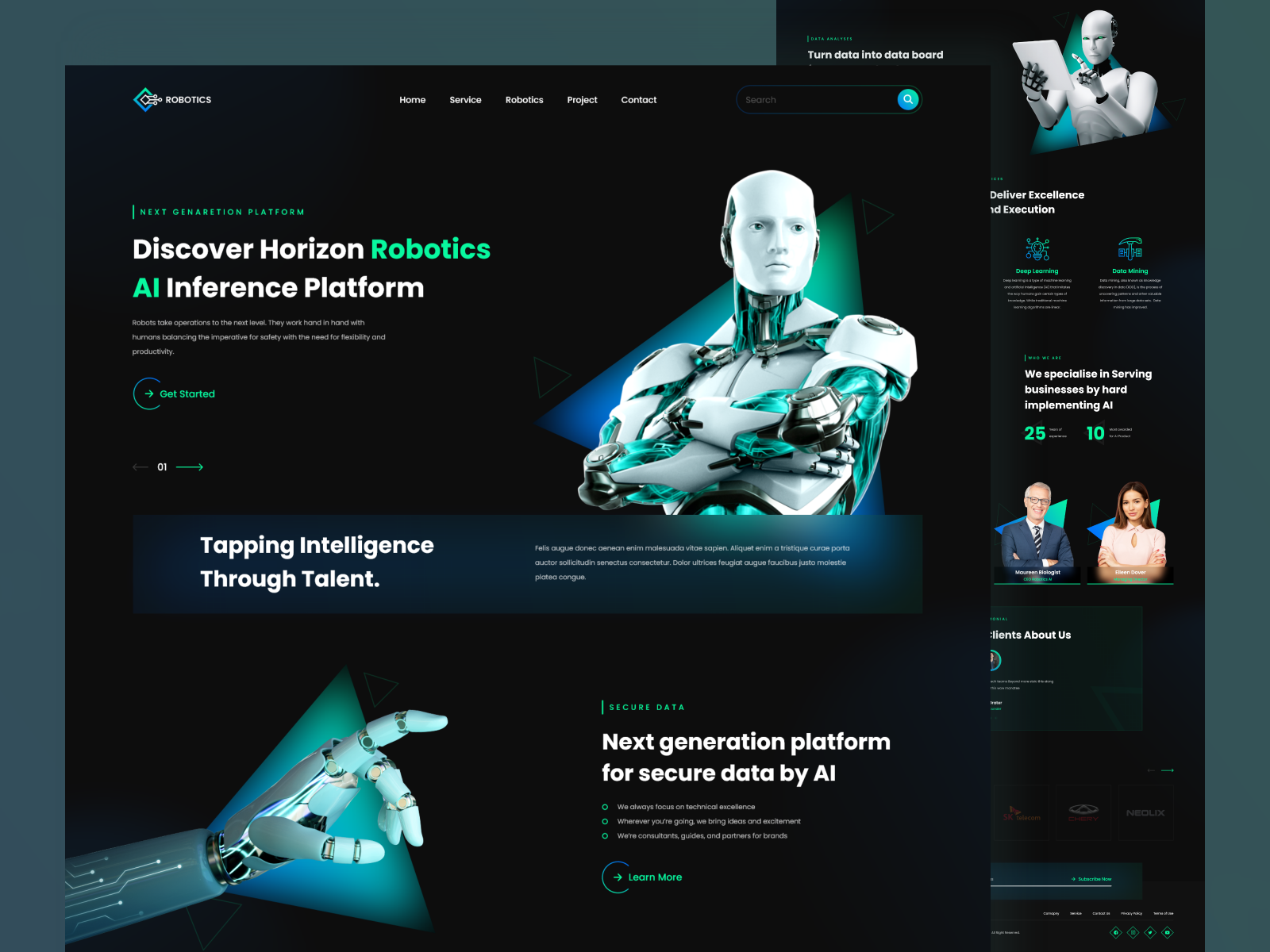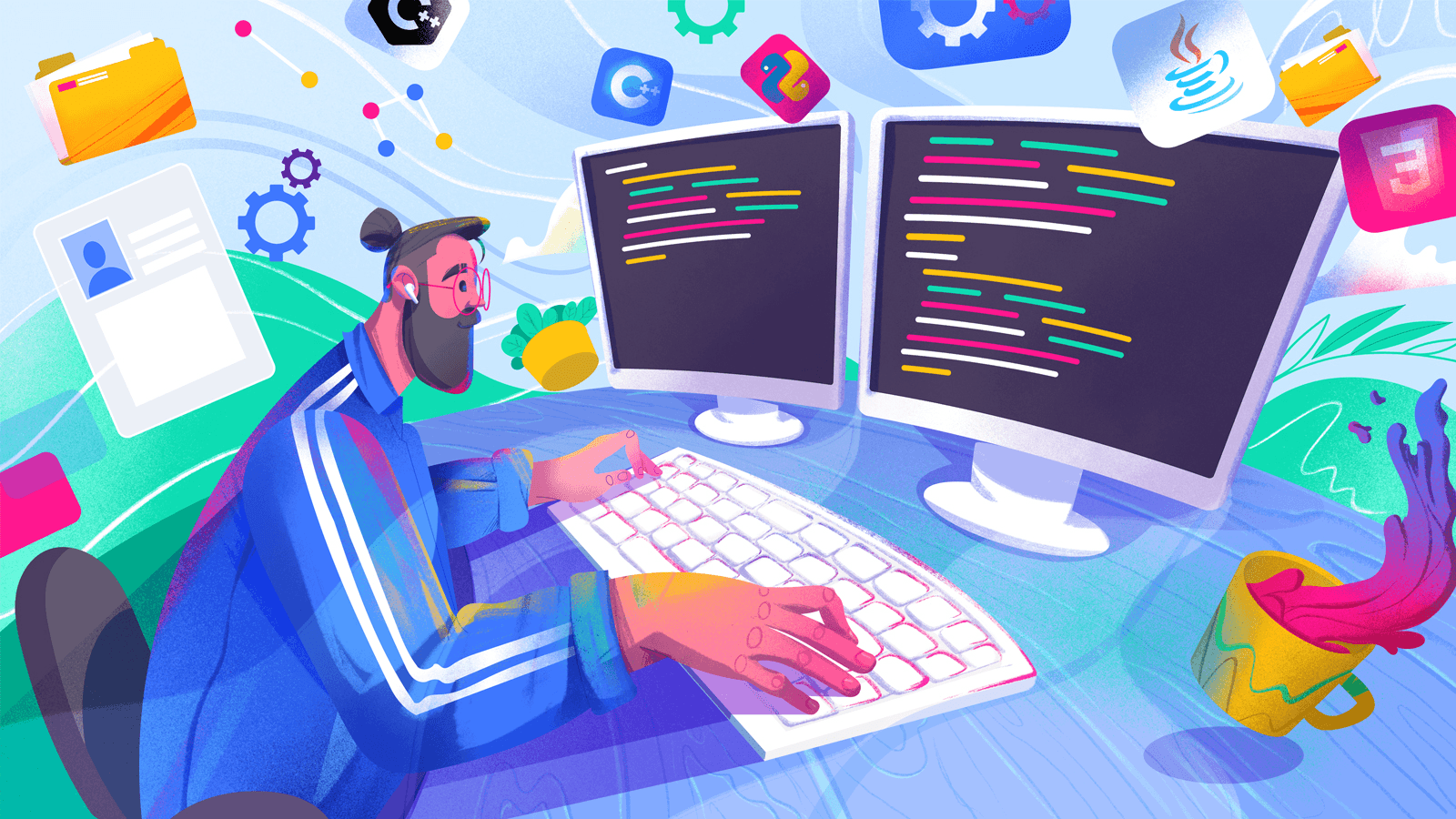In this article, we gathered a dozen of web and back-end development trends for 2023. They are from different areas, like e-commerce, programming languages, security, etc. Developers will find out what skills they should polish, while business owners will discover new toolkits for their future projects.
General development trends
Accelerated response time expectation
In 2022, people prefer using mobile devices over desktops: they take up 55% of the market. However, the Internet keeps evolving, and users expect web pages to load faster and faster, even if they have lots of content.
That’s why Google launched an open-sourced project for accelerated mobile pages (AMP). It’s designed to speed up websites on smartphones and tablets by using a stripped-down HTML and a lightweight CSS version. Usually, pages load in 3 seconds or so, while the AMP version loads in 0,5 seconds. It’s not surprising that this feature improves the user experience and the website’s visibility in search engines and conversions.

Login and sign up screens by Ashwith
Two-factor authentication
This software development trend is related to security. Two-factor authentication, or 2FA, requires two methods of identity verification. They usually consist of a username and a password as the first factor, accompanied by one of the secondary verification options. The popular choices are “authenticator” mobile applications, SMS, or a phone call with the code. This type of authentication is robust against brute-force attacks, phishing, and social engineering. It keeps the account secure even if they were stolen due to an exploit or cybercrime. The criminals will be simply unable to access any accounts without having a physical device since they need it to complete the process.
Two-factor authentication improves private data protection and makes hacking users’ accounts harder. However, it still requires a password that is vulnerable to cyberattacks. The development trends suggest getting rid of passwords. This idea was supported by enterprises like Apple, Google, and Microsoft. The companies plan to build passwordless authentication for all their platforms.
Such an authorization method already exists: people unlock their devices with fingerprints, face IDs, gestures, etc. These options also increase protection for private data.
Single sign-on (SSO) through trusted authorities
It’s an authentication method that allows users to sign in to multiple applications with one set of credentials. They can be different: a usual password with a username, a fingerprint scan, or a one-time password (OTP). The login works through a trusted authority, for example, Google, Facebook, LinkedIn, or Twitter. Once the user enters valid credentials, the authority gives a token in return. This token contains info about the person, and it’s safely encrypted. When processing the token, the application ensures that it is sent from a trusted authority, not from a criminal. If it is from a safe source, the user will log in successfully. Such tokens can be used for a sign-in of multiple apps.
SSO divides into two types: social and enterprise. People often use their Facebook, Google, Twitter, or another social network account to sign in to a website. With the enterprise SSO, employees access the company’s collaboration tools like GSuite and Zoom.
SSO has many advantages. It boosts productivity since people don’t waste time searching and entering the right passwords. This method also influences security standards meaning only authorized users will access private data. A company can establish a certain security policy with a required password length, complexity, session expiration , etc.
Trends in software development for e-commerce
Chatbots integration
Chatbots are getting more and more popular — companies build them into websites and mobile apps. These smart assistants help customers get quick answers to FAQs, create online appointments and solve small issues. Another advantage is cost efficiency: a startup can save money because it needs fewer support managers. Chatbots are online 24/7, they don’t need holidays or sick days, as well as long-term onboarding. What’s more, they can collect users’ data for a marketing department and learn constantly by interacting with customers. These facts don’t mean that one can replace the whole support department with chatbots, but the managers can deal with more pressing issues and let bots solve simple problems.
The only disadvantage the chatbots have is they are text-based. The user has to type their questions or at least tap the pre-made FAQs. It requires time and effort and is not always convenient.
Voice search
The typing disadvantage led to the rise of a new software development trend — voice-based search assistants. The user can just say their requests, and an intelligent algorithm will find the answer or provide a solution. This way is easier, faster, and more engaging. No wonder this market is growing rapidly: it will hit $11.2 billion by 2026.
Voice search assistants are beneficial for both business owners and customers. They are saving time and allowing people to stay on a web page longer. And like chatbots, voiced search gathers information about the client’s tastes and preferences. Of course, there is much to improve. For instance, the way the bot interacts with search engines. Still, many small businesses started to adopt voice search and recognition services. They also invest in studying natural language processing, or NLP.
Augmented Reality (AR)
AR is a mobile and back-end development trend that has been extremely popular lately. It is a mixture of the digital and real world. The content can consist of different aspects, like audial, visual, sensory, etc. In AR, the transformed data is represented in our world as an overlay, creating a special interactive space. Such experiences require advanced input, environmental perceptions, and computer processing done preferably by a cloud tech. Nevertheless, the AR market is expected to hit $3.7 billion by 2025.
Many mobile applications use AR to deliver new content. Snapchat filters and games like Pokemon Go have been around for a while. However, now retail and makeup companies also implement this technology to make the user experience more immersive. Virtual fitting apps for sneakers and digital makeup studios to try on new palettes or hair colors — are just two examples of popular applications.
Apart from visualizing, AR makes step-by-step tutorials clearer and more illustrative. This fact influences decision-making. That’s why AR technology is perfect for e-learning projects since it’s very interactive and immersive.

Axel Arigato Virtual fitting app concept by Conceptzilla
Popular programming languages for back-end web development
Ruby
Ruby is a great multi-purpose language. It’s extremely flexible, and its code is easy to maintain. Over the recent years, the language has received well-deserved popularity due to its developer-friendliness, a great number of libraries, and thriving community. Ruby is cross-platform, meaning it runs on Windows, Linux, and macOS.
Ruby is used for automation, web scraping, command-line tools, data processing, and DevOps. However, However, most developers use it along with the fantastic Ruby on Rails framework for rapid web application development. With this tool, even a small team can create large applications very quickly.
Python
Python has been a popular programming language for back-end software development for quite a while. It’s easy to grasp, beginner-friendly, and constantly evolving. Moreover, the community offers lots of tools, ready-made libraries, and frameworks to boost language features. There are many learning courses, tutorials, and schools that teach Python. That’s why IoT, machine learning, and AI developers often use Python for their intelligent creations.
Elixir
Elixir is a Ruby-like programming language that was invented to cut the rough edges of Erlang. They have similar features, and Elixir has the tools its predecessor missed. Since Elixir is built on top of Erlang VM, it offers all the concurrency tools that are perfect for scalable, distributed, and fault-tolerant systems. This language is focused on back-end development and provides clear tools for debugging.
Go
Go programming language, or Golang, was developed by Google in 2009. It’s an open-source project supported by the famous IT company and a large community. Although Go doesn’t have a large toolkit, it is rather easy to learn and straightforward, especially for C developers. Also, this language is great for microservice development since it’s quick and versatile, with a small software footprint.
Many large businesses prefer using Golang for creating apps. For example, Twitch, Dropbox, Uber, and others.
Back-end development trends in technology
Blockchain
Blockchain is a part of Web 3.0, the next Internet version. This technology has several ways of usage. In cryptocurrency trading, it allows people to bypass expensive payment systems, reducing transaction expenses and eliminating banking transfer fees. It also saves time: the money or data transfers are completed in minutes.
However, the main advantage of the blockchain is decentralization — it doesn’t have a main vault or server. It’s a distributed public ledger that records transactions across millions of devices. The data is kept in blocks and formed into a chain. One cannot take out or change the block from the middle of the chain without altering all other blocks in the network. Therefore, all the transactions history is publicly available and can’t be hidden or tampered with. So, the blockchain can also provide secured data sharing, copyright protection, and IoT management. Some healthcare companies work with blockchain to arrange medical records since the technology has a feature prone to history changes.
Artificial Intelligence
AI-powered assistants are an integral part of our lives. People use Siri or Alexa on their mobiles, laptops, smartwatches, tablets, and cars on a daily basis. These two voice assistants make up 36% of users worldwide, and most of the respondents say that this technology really improved their experience. It’s not surprising since voice assistants communicate with people in a natural way, creating an emotional bond between a brand and a client. They understand human language and learn to give more elaborate responses. There are lots of funny videos where two voice assistants talk to each other, supporting a rather thoughtful conversation. So, if you want to create a personalized experience for a user, integrating this development trend might be a great idea.
AI has proved itself as a perfect artist. Recently, neural networks created a blast in digital art. Smart algorithms of Midjourney and Dall-E can create a vast painting based on a few words. And by changing a phrase, one generates pictures in absolutely new approaches under a few minutes. The other AI technology allows people to restore the lost parts of an image while keeping the same style and color scheme. These features are valuable in UI/UX design and app development. They help save time and money, especially under strict deadlines.

Robotics (AI) web page design by CMARIX TechnoLabs
Intelligent algorithms are also applied in data analysis. They can analyze large databases at light speed to find new insights and patterns. AI can also predict possible actions and suggest the best strategies for them. These features are essential when developing a company marketing strategy when one needs to analyze the behavior of all potential clients. Therefore, a product gets a higher chance of becoming demanded on the market. With AI, the data is gathered from all platforms, which is extremely convenient and helps see the whole picture.
Serverless Computing
The serverless model allows the running of applications using cloud-based servers. In this case, the back-end development team doesn’t need to worry about server availability, capacity, or managing infrastructure. Such services are provided by AWS, Microsoft Azure Functions, Google Cloud Functions, and others.
The business strives to reduce web development costs and prevent data loss and system overloading. When applying cloud technologies, there is no need to upgrade servers’ capacities — the cloud service provider deals with these issues. What’s more, the service fee is based on the actual server resource usage.
In 2025, the serverless computing market might hit $21.1 billion. Although this method is not yet widespread among classic websites and apps, this statistic still shows a growing demand for the technology. Most companies use serverless computing for image recognition, multimedia processing, chatbots and assistants, notification engines, IoT apps, data collection, etc.
Take advantage of the back-end development trends
Implementing these development trends into your business will help you stay ahead of the competitors, providing high-quality services and demanding products. However, it’s not wise to follow all of them at once: it’s better to pick only those that will help your business grow and fit into the workflow.
Do you need a development team that follows the latest tendencies? Contact us, and we will deliver the product that will stay in the time flow.
Created by Aleksey Gureiev & Mary Moore
